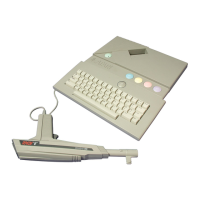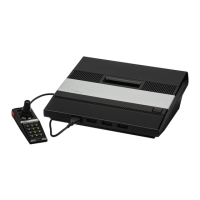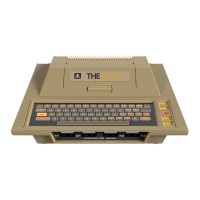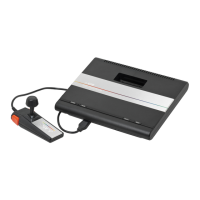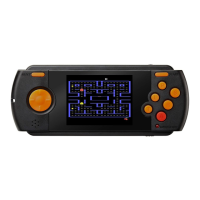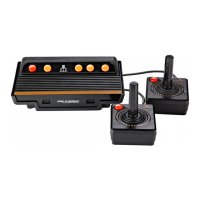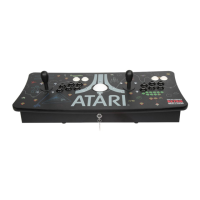SECTION
4
2600
DIAGNOSTIC
FLOWCHART
The Diagnostic Flowchart is intended to be easy to use and the primary aid when
troubleshooting the 2600.
Follow the prompts in the order presented. When
a
quesrion
is asked, follow the line from that box which best applies to the unit's condition. The
figures referenced
in
the flowcharts are located
at
the end of this section. When
a
line terminates with
a
letter inside
a
circle, note that a page number (i.e., pg.
4-31
is
near it. Turn to that page, locate the letter in another circle,
and
continue the
diagnosis. The flowchart leaves nothing to chance, it tells you when to perform a
specific test, and when to replace components, and even when and how long to "burn-
in"
the unit. "Burn-in" the unit for
at
least two hours after completing repairs.
When a problem is extremely difficult to diagnose, the flowchart sends you
to
the
Signal Tracing Cartridge (STC) routine,
"D"
page 4-47. Due to the repetitive nature of
the STC routine, no flowchart is used.
Read and follow the instructions
as
directed.
Should the STC procedure fail to isolate the problem, after carefully inspecting the
switchboard and motherboard assemblies for shorted and/or open trace lines, and
solder
bridges swap all three chips (6507, 6532, and
TIA).
Should the problem still
persist, call
ATARI,
Techline Specialist: Inside California at (800) 672-1466
and
Outside California
at
(800) 538-1535.
Be
certain to always burn-in the unit for two
hours after completing repairs. This helps to ensure that intermittent problems are
found and also greatly increases your customer's satisfaction with your repair work.
SWAP
OUT
PROCEDURES
Many
places in the diagnostic flowchart,
a
box tells you to "swapout"
a
chip or
a
number of chips in
a
order.
The "swapout" instruction means that you
should replace the indicated components one
at
a time with a known sood component
of
the same type. The
VCS
should then be tested with the new, known-good
component in place to see whether the "swapout" solved the problem being checked.
If
the swapout did not fix the problem, the known-good component should be left in, and
the next component inserted. Once the problem is solved, you then place the
suspected
bad
chips one by one into the system to determine whether or not those you
pulled out are truly defective.
In
this way, you avoid needlessly replacine, gbod
components.
CAUTION
-
-
-
-
-
-
-
-
Extreme
care
should
be
taken
when handling
the
integrated circuit
chips
(A200,
A20
1,
AZ02,
A203).
They
are
all
very sensitive to
static
electricity
and
can
easily
be
damaged
by
careless
handling.
Always
keep
the
chips
in
their
plastic
carrier
tubes
or
on conductive foam
when
not
handling
them.
Make
certain
you are
well
grounded
when
handling
the
chips.
Atari
strongly
recommends that
you
wear a conductive
grounding
band
(which ties from
your
arm
to
ground) when handling
the
chips.
The
chips
are
also
susceptible
to
damage
from
stress
when
being
removed
from
or
inserted
into
the
sockets
Always
use
a
chippuller
when
removing
the
chips.
Do
not
pry
chips
out
with
a
screwdriver or
any
other
tool.
Failure
to follow
the
above
guidelines
results
in
unusually
high
chip failure
rates
and
extra
expense.
'
2600/2600A Domestic
VCE
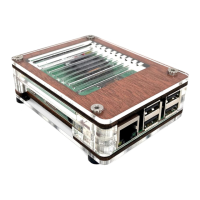
